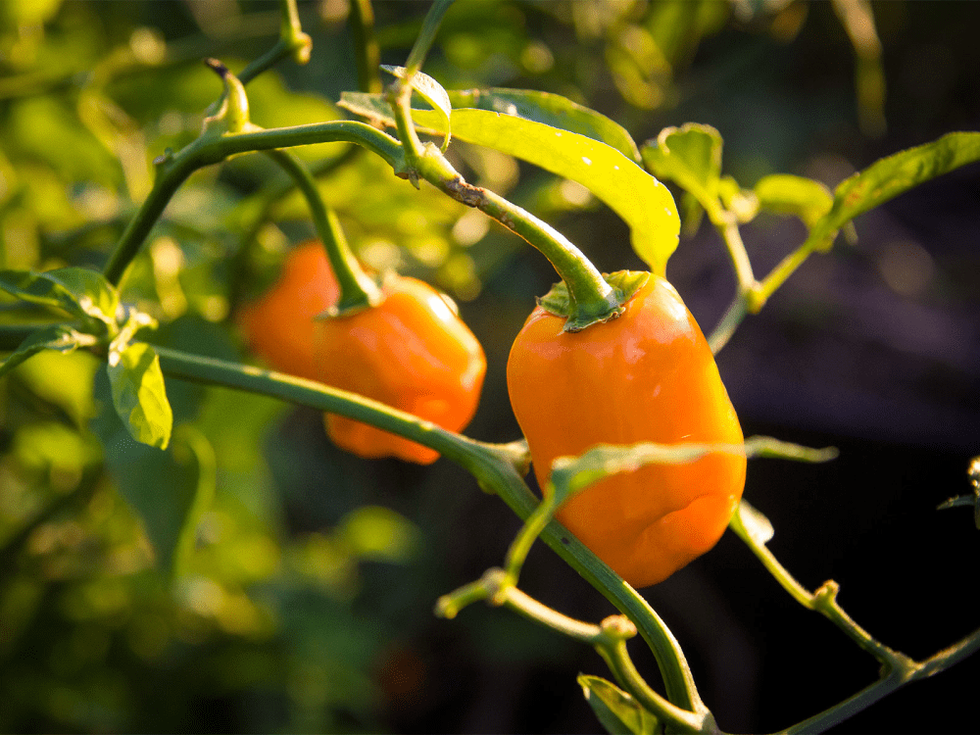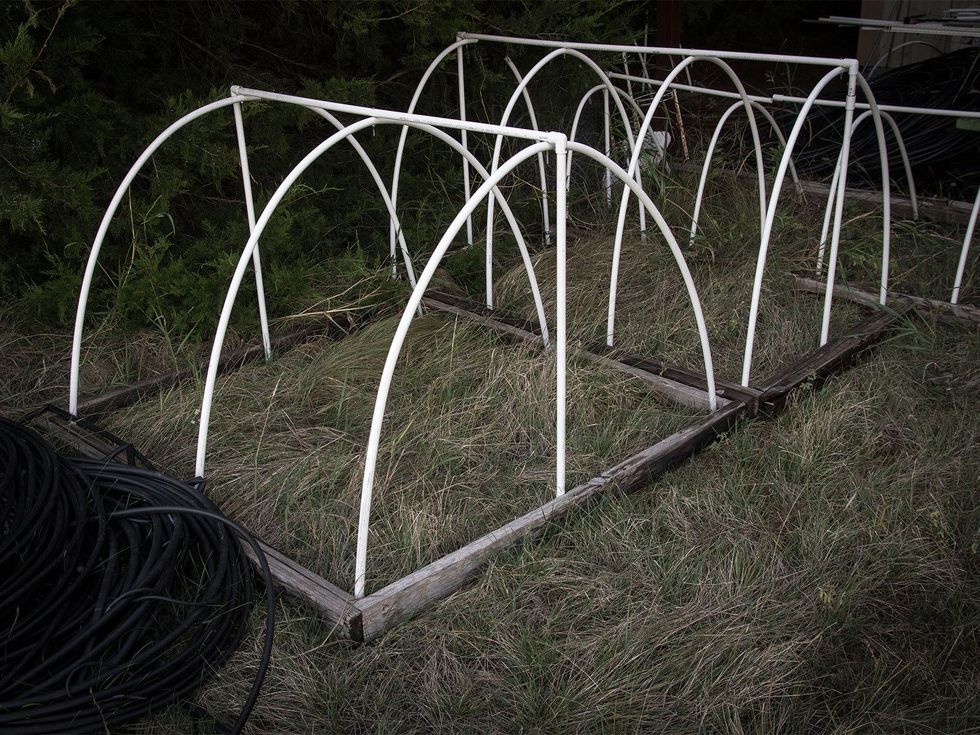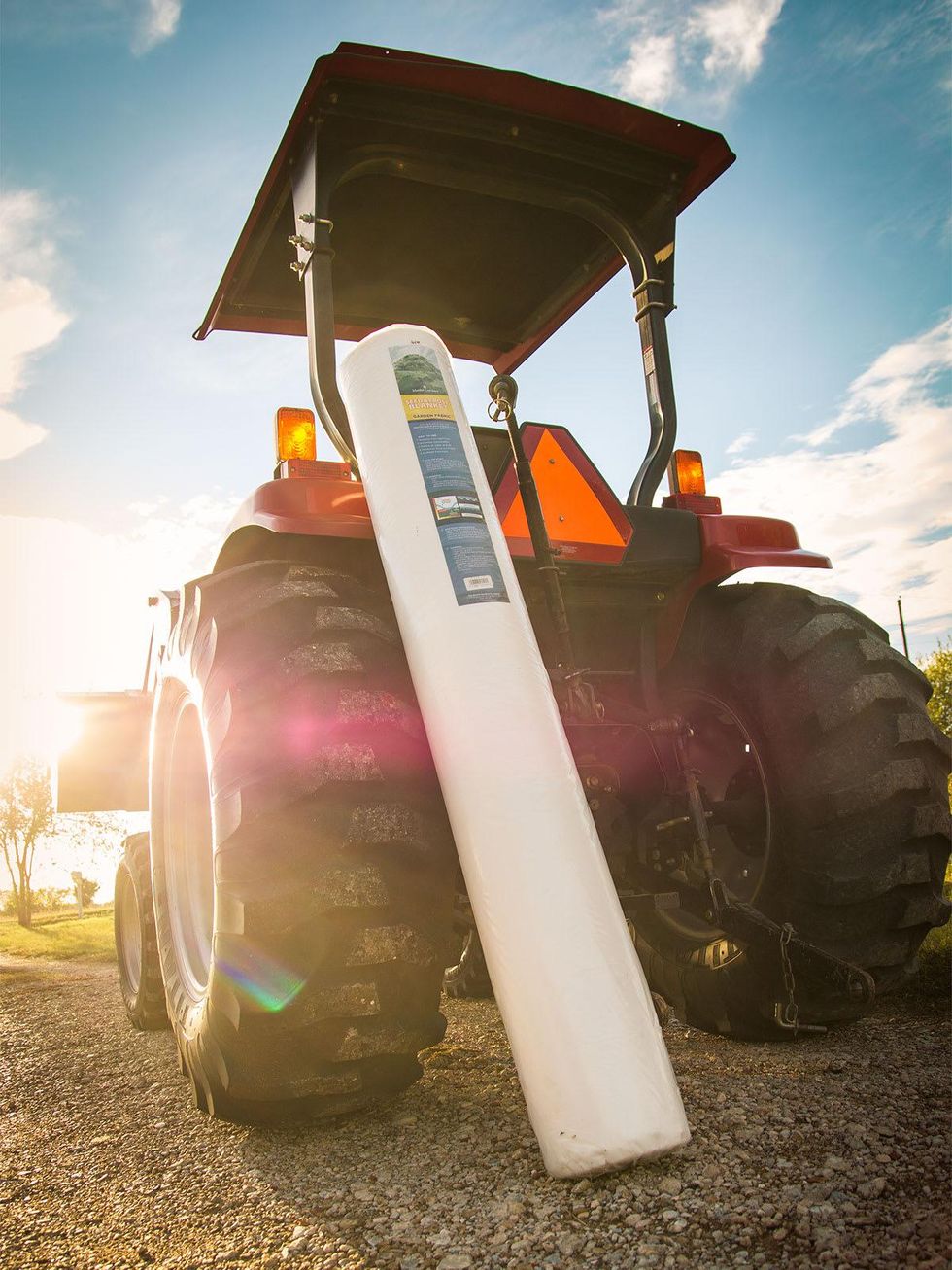The Farmer Diaries
Texas farmer takes steps to prepare for Arctic blast
The forecast of a potential Arctic blast headed for North Texas this week calls for a decision: let frost take its course, or cover warm-season crops in hopes of extending their yields for another month.
Temperatures are predicted to stay a degree or two above freezing, but the judicious farmer knows to prepare for colder nights than the forecast, especially in areas outside the city. Even if the ambient air temperature doesn't plunge to 32 degrees Fahrenheit, crops can still die. Fast evaporating moisture on a plant's leaves can create ice crystals out of the dew, which is all that frost is.
But as long as the low temperatures come in quick spells and not hours of below-freezing conditions, a frost blanket can keep plants alive and extend a harvest into December.
As long as the low temperatures come in quick spells and not hours of below-freezing conditions, a frost blanket can keep plants alive and extend a harvest into December.
Frost blankets are designed to keep ambient temperatures around plants higher than the temperature outside the blanket, as long as they also cover the ground beneath the plant, thereby trapping the heat it emits. Most blankets specify their rated protection — either 4 degrees or 8 degrees of heat-trapping ability.
In recent years, I've succeeded in keeping tomatoes going as late as Christmas Eve by covering the bushes as the sun sets each day and uncovering them first thing in the morning. I've also made frames with a wooden base and arches made of PVC pipe for keeping the frost blanket in place and off plants. The result looked like covered wagons from a TV Western lined up in my raised bed garden.
This year, I have simpler plans. A lackluster growing season left me with only a couple of tomato and pepper plants to cover; pulling out PVC pipe frames and buying the hard-to-find, 10-foot-wide frost blanket rolls they need isn't worth the effort.
Instead, I'll use cheaper 6-foot-wide frost blanket rolls and two 5-gallon buckets for each bed I wish to protect.
In a 4-by-8-foot raised bed, I'll place the buckets about 6 feet apart, in the middle of the bed. These make columns that keep the frost blanket off the plants, for the most part. Then I'll cut a blanket from the roll, measuring 6 feet by 9 feet. Placed over the buckets, a blanket this size covers the whole bed and leaves plenty of excess around the sides that can be tucked into the raised bed frame and held in place by bricks, wood scraps or heavy rocks.
This method also allows me to fill the buckets with water, which gives off heat all through the night and adds more heat to save the plants I tuck in.
For larger plants that have overgrown their beds, I'll unroll as much blanket as needed to drape over them, weighting the edges of the blanket down with stepping stones. When it takes more than one pass of the roll, I overlap the seams by a few inches, like shingles on a roof.
I also make sure that the bottom layer at a seam is south of the layer that sits on top of it, so when a north wind blows, it doesn't open up the seam. Covering a large outgrowth of plants is much easier with a 10-foot-wide roll of blanket, if you can find one.
For very large plants, I will start unwinding a roll at the base of the plant and spiral upward around it until I reach its top, rolling the plant up like a mummy in a covering of linen. Several spring clamps here and there will keep the covering intact.
Cool season crops will not need any protection, not even to be safe. My spinach, Swiss chard, turnip greens, collard greens and carrots will make it just fine in the open air. But peppers, tomatoes, eggplants, squash and cucumbers will need to be shielded with frost blankets.
I'll move few of my container-grown plants inside a garage or a shed each night and move them back outdoors each morning. I see no reason to waste a blanket or risk losing them if they're easy to move indoors.
Altogether, I think I'll only cover only four or five beds this year, not the dozen or more as in past years. Too few of my plants are worth saving, and I've begun to experiment with greenhouse growing in a more serious way than my tests last year, so I'm not too distressed about my crops outdoors meeting their end.
Frost blankets are sold at home improvement stores and garden centers for just under $20 for a 6-by-25-foot roll. I've learned the hard way that the worst time to buy frost blankets is the day before cold weather is predicted to occur. It's a good idea to buy a few rolls well in advance.




